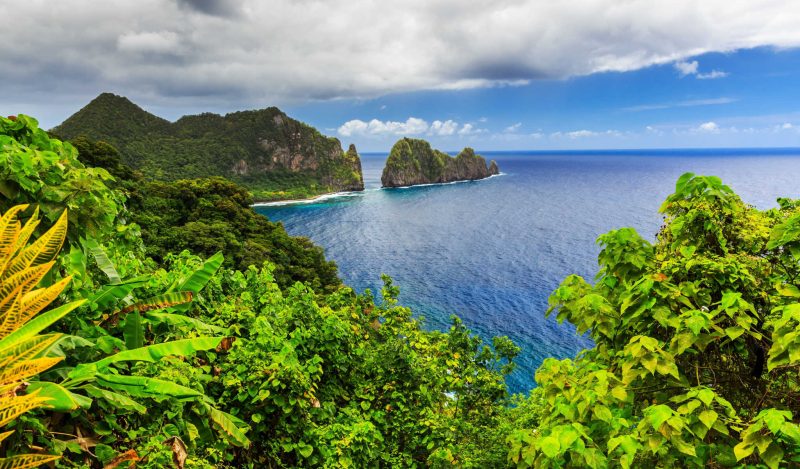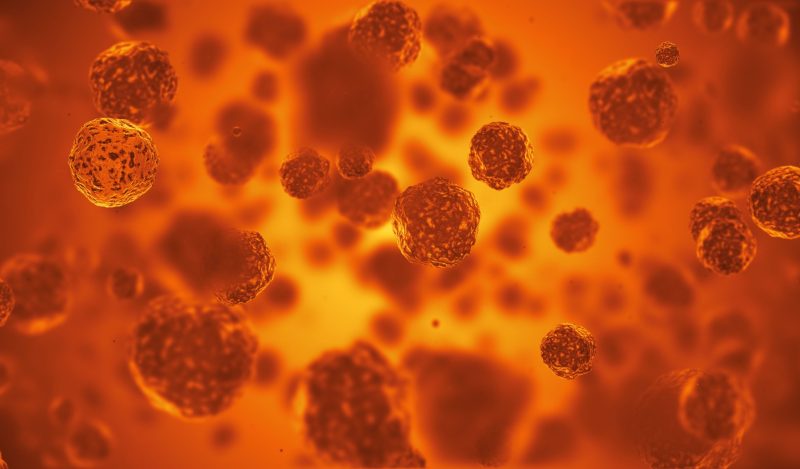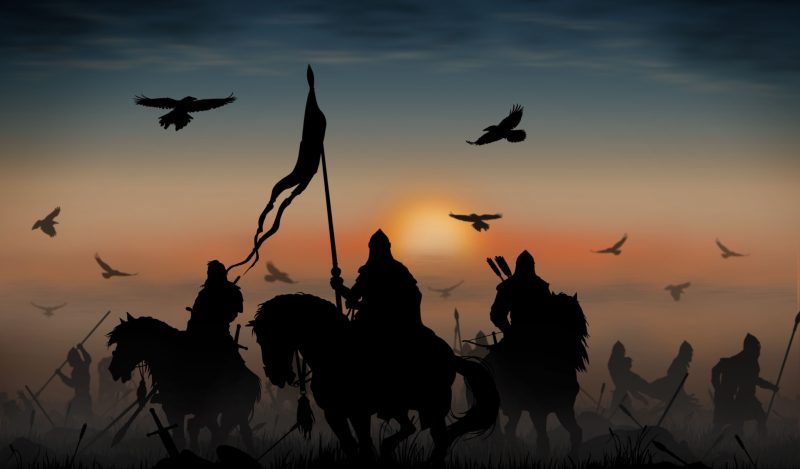The Wuhan lockdown on January 23, 2020, which panicked governments around the world into copying China’s ‘house arrest’ response to Covid, is said to have been unprecedented.
However, a few weeks earlier in the South Pacific island nation of Samoa the same draconian measure was used by authorities to respond to a measles outbreak.
By the time China’s draconian action made world headlines in January 2020, the story of the Samoan lockdown was memory-holed and its significance missed. As I shall explain, the evidence is that this authoritarian new normal is emerging from America rather than China.
On December 2, 2019, the government of Samoa, which had declared a measles outbreak in mid-October, announced a two-day national lockdown would occur on December 5th and 6th as it intensified its efforts to vaccinate its people against measles. A curfew was imposed, businesses ordered to close, and Christmas was cancelled. Unvaccinated families were instructed to identify themselves with red flags outside their homes and to keep off the roads so international vaccination squads could go door-to-door at speed.
The backstory to the Samoan outbreak begins in 2018. Two babies died on the same day within minutes of being given MMR (measles, mumps and rubella) vaccines, which caused a catastrophic drop in confidence in the measles vaccination programme. Two nurses were subsequently blamed for improperly diluting the vaccines with a muscle relaxant and jailed for five years for negligent manslaughter.
Following the tragedy, the Samoan government suspended the MMR vaccination programme for ten months. The number of babies given a first dose of MMR vaccine dropped from 80 percent in 2017 to 40 percent in 2018. In 2013, MMR vaccination levels had been at a high of 98.7 per cent. Not all returned for second doses.
After the MMR vaccination programme was restarted in the summer of 2018, uptake was low. Efforts to increase the uptake of the vaccine began in earnest on October 1, 2019 when the United Nations children’s fund Unicef shipped 100,000 MR (measles and rubella) vaccines and 15,000 MMR vaccines manufactured by the Serum Institute of India to Samoa along with 30,000 doses of vitamin A.
Approximately 5,000 babies are born each year in Samoa, so the scale of the shipment suggests a decision was taken to run a supplemental vaccination programme to capture anyone who was unvaccinated.
Just a fortnight later, Samoa declared a measles outbreak when a year-old baby died a week after being admitted to hospital with a suspected measles infection. Samples from 38 other children with suspected measles, all from the southerly island of Upolu, were sent to Melbourne for testing.
The day after the child died, Dr Helen Petousis-Harris, a New Zealand-based vaccinologist and chair of the World Health Organisation’s Global Advisory Committee on Vaccine Safety told the Fiji Times: ‘Measles is the most infectious disease known to man. So, assuming it’s in the community, the only way to control it is to increase immunity among the people and that is through the vaccine, quickly.’
By November 17, some 700 children had suspected measles infections. The Samoan government declared a state of emergency, closing schools, banning anyone under 18 from public gatherings and making vaccination compulsory for adults. A week later, when it was reporting 1,797 measles patients and 22 deaths, Samoa stopped using laboratory tests which genotype the virus to confirm infection.
On November 22, New Zealand Foreign Affairs Minister Winston Peters said they were getting ‘all spare human and medical utilities ready for the compulsory vaccination programme that they’re going to start running in Samoa’ to help out ‘as much as we possibly can.’
This took the form of 3,000 doses of vaccine, 30 vaccination nurses and ten doctors. The vaccine New Zealand uses is Priorix, produced by GlaxoSmithKline. In total, 18 emergency teams from around the world arrived in Samoa to provide medical assistance.
Measles vaccination is recommended by the World Health Organization. It says the risk of complications from an infection is 1,000 times higher than the risk of adverse events from the vaccine. This is a statistical sleight of hand, because the risk calculation used for natural measles infections is ‘as measured in industrialised countries.’ A footnote states: ‘The risk in developing countries is generally higher, but not well defined.’ The WHO also estimates that about five per cent of children given measles vaccines develop a fever and two per cent develop rashes, typically five to 12 days after inoculation.
In countries such as Samoa, where protein deficiency malnutrition is common, children’s vitamin A levels are usually suboptimal, if not outright deficient. The WHO protocol is that vitamin A, which is essential for the immune system, is given alongside measles vaccines to boost the antibody response. Large doses of vitamin A are also given to treat measles infection, since a deficiency increases mortality and severity.
Between October and the end of December 2019, 5,707 of Samoa’s 200,000 population were reported to have become sick with measles. Eighty-three died, 76 under the age of five.
From the time the outbreak was declared, the UN went into full crisis propaganda mode. Its resident coordinator in Samoa, Simona Marinescu, said: ‘I think we have all learned a painful lesson here. We speak about a nation that literally had no vaccination for a certain number of months and that happened on the grounds of the very sad story that happened last year with the two babies killed during a routine vaccination.’
The deaths kept mounting. By December 2, with 62 measles fatalities recorded, 54 of them under the age of four, the government of Samoa announced its unprecedented two-day nationwide shutdown on December 5 and 6 to complete the vaccination campaign.
The country was put under curfew and businesses ordered to close. Unvaccinated families were instructed to identify themselves with red flags outside their homes and to keep off the roads so that international vaccination squads could go door to door at speed.
By the end of the lockdown, 90 percent of the targeted population were inoculated, followed by a further 3 percent by December 12. In the final reckoning, 134,499 individuals were vaccinated. Given the previous levels of MMR vaccination, many were receiving boosters, not first doses.
The Samoan prime minister, Tuila’epa Sa’ilele Malielegaoi, blamed anti-vaccination sentiment for the crisis, saying: ‘We have so many anti-vaccination people and of course many of our people still resort to traditional healers.’
The government sent a message about the seriousness of its intent to vaccinate by arresting a local man, Edwin Tamasese, who had spoken out publicly. Measles vaccines contain weakened (attenuated) live virus and he believed under-attenuated vaccines were causing the outbreak.
Many people were becoming sick five to six days after the inoculations, during the convenient two-week window when they are considered unvaccinated for statistical purposes.
Measles is a more severe disease in adults than in children due to maturational differences in the immune system that enable children to mount more effective immune responses. The problem in populations where vaccination suppresses measles is that the vaccine protection eventually wears off, creating newly vulnerable adults.
Tamasese, who had been providing vitamin A and vitamin C for families with sick children sent home from hospital, was charged with incitement against the government for allegedly posting a message on Facebook saying: ‘I’ll be here to mop up your mess. Enjoy your killing spree.’ The case was dismissed a year later for lack of evidence.
The idea for the escalating response measures didn’t come from Samoa. It was following the lead of its kinsmen in American Samoa, a neighbouring territory of seven islands that was annexed by the United States as an unincorporated territory in 1900.
American Samoa, with a population of 55,000 and a measles vaccination rate of 99.7 percent, had declared a state of emergency on November 13 after two under-fives, visiting from Samoa, developed measles. Extraordinarily, it closed schools, banned mass gatherings, and banned and introduced border controls requiring proof of vaccination.
On December 8, 2019, this state of emergency was extended and 14,128 adults were given measles vaccines in a mass vaccination campaign under direction from the Centers for Disease Control and Prevention (CDC). In a Public Health Emergency, the CDC acts under direction of the Assistant Secretary of Preparedness and Response (ASPR). In December 2019, the ASPR was Dr Robert Kadlec, a biosecurity hawk who was the first Homeland Security Director of Biosecurity Policy under President GW Bush.
A press release issued by the American Embassy in Samoa on the day it announced the lockdown suggests the Samoan government was also taking advice from the CDC. Ambassador Scott Brown said, ‘The advice to Samoan families from the specialists from the CDC echoes the official advice from the Samoan government: The best thing you can do to protect yourself and your community is to make sure you and all your loved ones get vaccinated.’
‘You can save lives today. If you have unvaccinated folks in your household, please tie a piece of red cloth outside so that the doctors and nurses can easily identify the homes needing most assistance.’
The Washington Post reported that one of two CDC officials sent to Samoa was an expert who would focus on ‘fighting misinformation about measles and other vaccine-preventable diseases, in response to requests from Unicef.’ Robert Linkins, who it identified as a global immunisation official at the CDC, said Samoan health officials needed ‘to communicate that the disease is dangerous and that the vaccine is good.’
Following the lockdown announcement, USAID, the US agency for international development, announced it was sending the Samoans $200,000 in disaster relief, which may have encouraged a government which would otherwise have been concerned with damage to its economy. Days later, the World Bank announced it was committing $3.5 million in financing and a further $9.3 million to strengthen Samoa’s health care system.
The United Nations Central Emergency Relief Fund (CERF) stepped in with a further $2.7 million, some of which was allocated to strengthen Samoa’s vaccination monitoring system by digitising its records. Under the authoritarian new normal, when the next outbreak happens, no one will need to hang out red flags. The vaccination teams will know at the click of a mouse where people live and what they are to be injected with.
If you’re inclined to be of a suspicious nature, the fact that the Samoan lockdown was happening as the NIAID and Moderna were preparing to send a jointly owned prototype of a coronavirus vaccine to Dr Ralph Baric at the University of North Carolina Chapel Hill might just lead you to suspect it was a trial run. If timing was no more than a coincidence, it will certainly have provided useful lessons as the Coalition for Epidemic Preparedness (CEPI) folks began lobbying for Covid lockdowns in Wuhan’s wake.
Published under a Creative Commons Attribution 4.0 International License
For reprints, please set the canonical link back to the original Brownstone Institute Article and Author.









